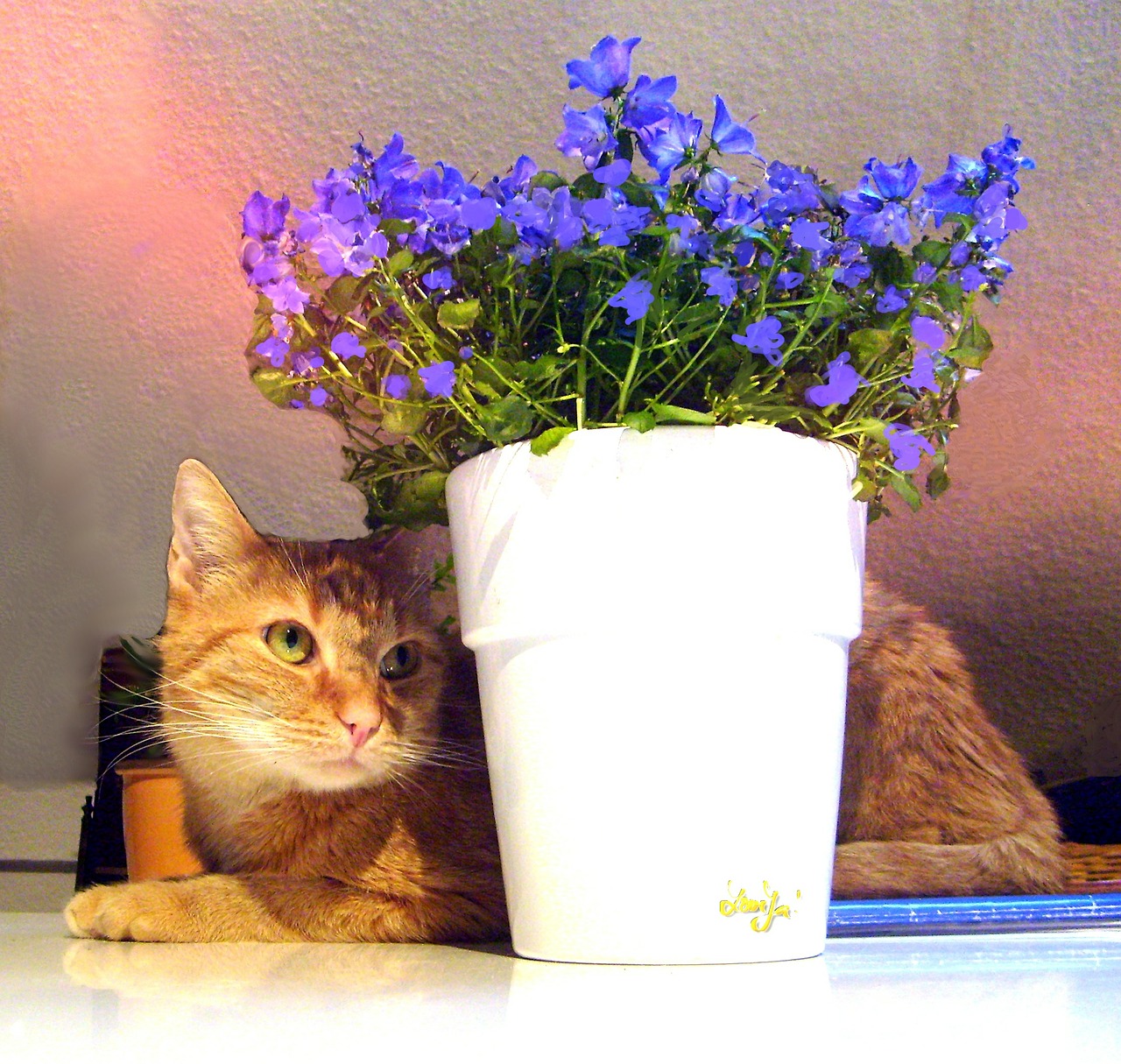Cats will chew on plants. And, because they love to climb and explore, it is difficult to keep plants out of their reach. Therefore, if you are going to have plants in your house, or if you let your cat out in your yard, you need to be able to accurately identify the plants to which your cat will be exposed. When in doubt, however, it is best to remove the plant from your home.
If a plant is poisonous, assume all parts of the plant are poisonous — though some parts of the plant may have higher concentrations of the toxic principle than others. Many toxic plants are irritants: they cause inflammation of the skin, mouth, stomach, etc. The toxic principle in other plants may only affect a particular organ like the kidney or heart.
The following is a listing of plants that are toxic to cats, as well as the most commonly encountered toxic plants:
- Amaryllis (Amaryllis sp.)
- Autumn Crocus (Colchicum autumnale)
- Azaleas and Rhododendrons (Rhododendron sp.)
- Castor Bean (Ricinus communis)
- Chrysanthemum (Chrysanthemum sp.)
- Cyclamen (Cyclamen sp.)
- English Ivy (Hedera helix)
- Kalanchoe (Kalanchoe sp.)
- Lilies (Lilium sp.)
- Marijuana (Cannabis sativa)
- Oleander (Nerium oleander)
- Peace Lily (Spathiphyllum sp.)
- Pothos (Epipremnum aureum)
- Sago Palm (Cycas revoluta)
- Spanish thyme (Coleus ampoinicus)
- Tulip and Narcissus bulbs (Tulipa and Narcissus sp.)
- Yew (Taxus sp.)
You can also visit the Pet Poison Helpline for their Top 10 Plants Poisonous to Pets, and the ASPCA for their extensive list of Toxic and Non-Toxic Plants.
WHAT TO WATCH FOR
Since many plants are irritants, especially for the gastrointestinal tract, most symptoms seen will be the result of irritation or inflammation, such as redness, swelling, or itchiness of the skin or mouth.
If the toxic principle directly affects a particular organ, the symptoms seen will be related to that organ. For example:
- Difficulty breathing (if the airways are affected)
- Drooling or difficulty swallowing (if the mouth, throat, or esophagus is affected)
- Vomiting (if the stomach or intestines are affected)
- Diarrhea (if the intestines or colon are affected)
- Excessive drinking and urinating (if the kidneys are affected)
- Fast, slow, or irregular heart beat (if the heart is affected)
IMMEDIATE CARE
If you see your cat eating a plant and you are uncertain if it is poisonous, or if you suspect your cat ate such a plant within the past 1 to 2 hours, you can do the following before you take him to your veterinarian:
- Remove any plant material from the hair and skin.
- If it necessary, you can wash the cat with warm water and a little non-irritating dish soap.
- The identity of the plant is very important for determining treatment. If you don’t know what kind of plant it is and you can bring it with you, do so. Veterinarians don’t receive much training in plant identification, but every effort needs to be made to identify the plant. If your cat has vomited at all, try to collect some it for the doctor.
- Call the Pet Poison Helpline at 1-855-213-6680.
VETERINARY CARE
Diagnosis
The best diagnosis is made by identifying the plant. Your veterinarian will give your cat a physical exam, and order such tests as necessary to determine the overall health of your cat. These tests are especially necessary if the plant is known to target specific organs.
Treatment
Once your cat has vomited, your veterinarian may give him activated charcoal to absorb any of the toxic principle that may be in the gut. Your vet may administer medication like sucralfate, which protects the damaged areas of the stomach.
Supportive care, such as intravenous fluids or anti-inflammatory medication will be used as needed, especially if the gastrointestinal tract is severely affected.
LIVING AND MANAGEMENT
Some plants are fatal for cats when ingested, regardless of how quickly and excellent the care may be. This is usually true of lilies. Other plants may cause enough damage that prolonged aftercare in the form of medication or special diet is needed. Be sure to follow your veterinarian’s instructions.
PREVENTION
Take whatever steps you can to protect your cat from exposure to poisonous plants. This includes removing such plants from your home and yard.
(This article reprinted from: PetMD
Image source: Public Domain Images)
